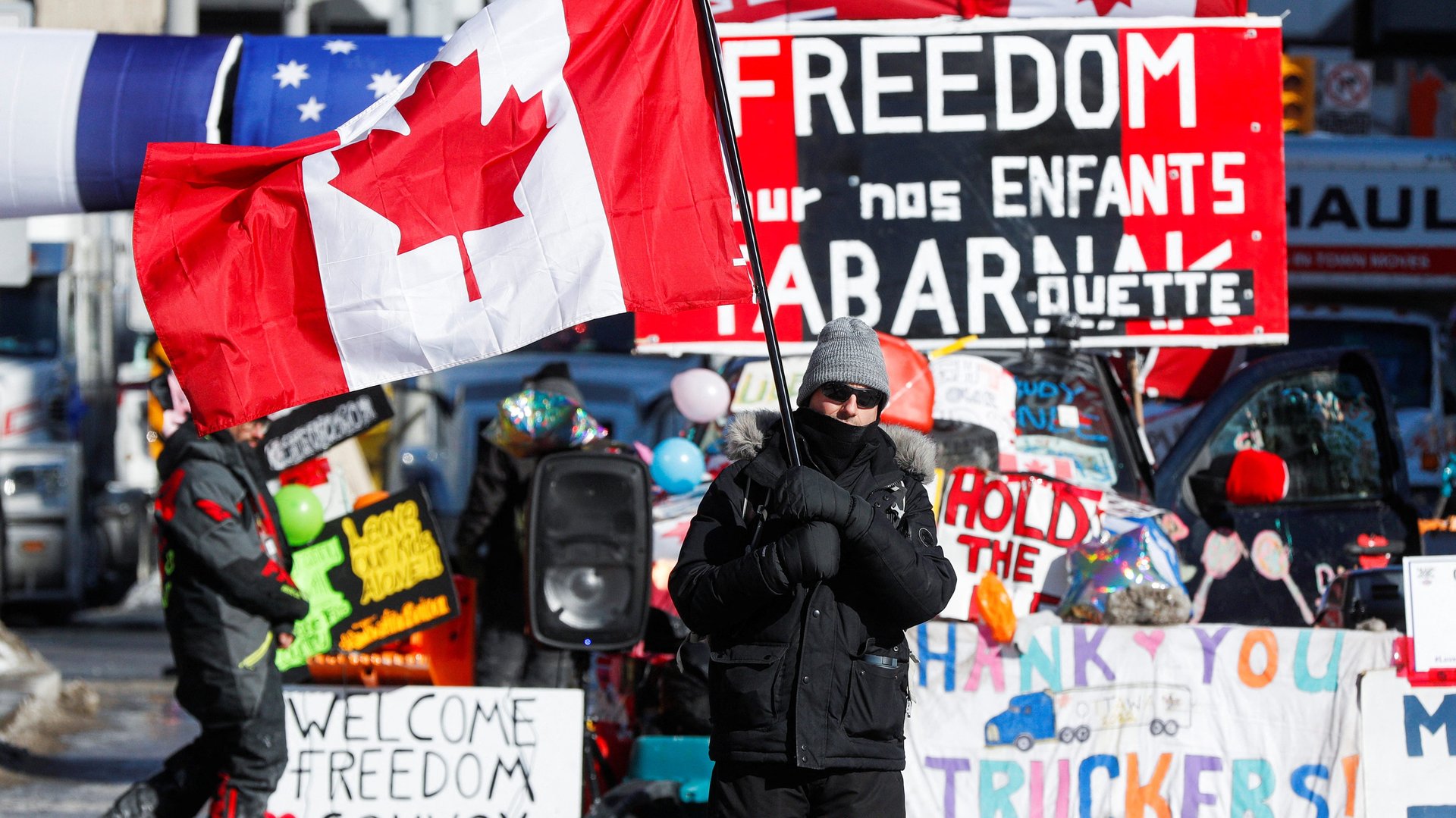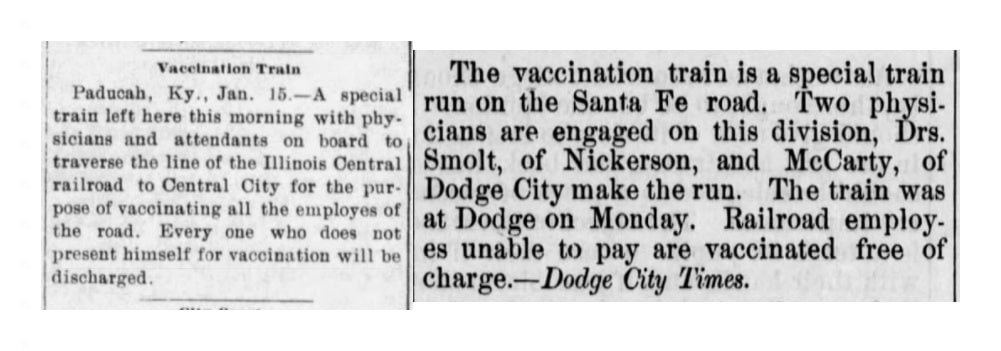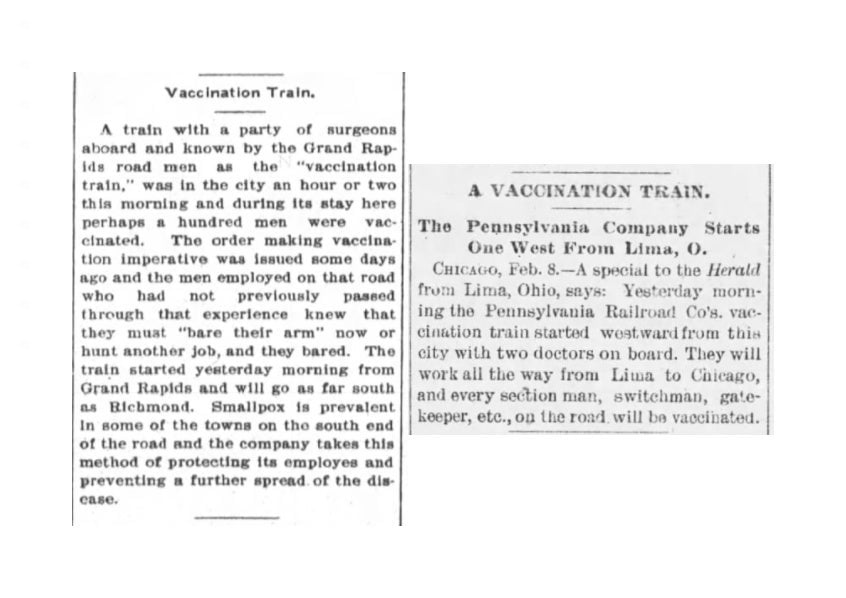The Canadian truckers would have been horrified by the US vaccine trains of yesteryear
Canada’s prime minister Justin Trudeau has declared the first state of national emergency in 50 years, suspending some civil liberties. He did so to deal with the ongoing protests by truckers gathered in Ottawa against the mandate that those driving into Canada from the US be vaccinated against covid-19.


Canada’s prime minister Justin Trudeau has declared the first state of national emergency in 50 years, suspending some civil liberties. He did so to deal with the ongoing protests by truckers gathered in Ottawa against the mandate that those driving into Canada from the US be vaccinated against covid-19.
Most of the 140,000 truckers delivering goods between Canada and the US are Canadian, and the vast majority (85%) of them are vaccinated. Yet the protesting minority has been wrecking havoc on the supply chain, and is refusing to end the protest until the vaccine mandates are revoked. Their main claim is that the mandates violate their freedom, although demanding that transportation workers get vaccinated is nothing new—in fact, it has a history that dates back almost two centuries.
The duty to bare arm
Between the 1880s and the 1940s, it was common for railroad companies to require their workers vaccinate, especially during smallpox outbreaks, says Andrew Wehrman, a professor of history at Central Michigan University and the author of The Contagion of Liberty: The Politics of Smallpox in the American Revolution.
At the time, the threat of smallpox wasn’t something to be taken lightly. Unlike covid-19, the disease could be visibly disfiguring, and, with its historic mortality rates as high as 30%, there was little doubt as to its danger. News of outbreaks would spread quickly, and though there weren’t federal vaccine mandates, local authorities would put in place all the measures they could to avoid contagion, including demanding that all travelers coming to a town be vaccinated.
As the US railroad network grew, so did the chance that smallpox might travel along it. Vaccine hesitancy wasn’t a big issue then, says Wehrman, although there must have been some level of resistance to require the existence of mandates. Companies weren’t soft about it either: According to reporting of the time, unvaccinated workers knew that “they must ‘bare their arm’ now or hunt another job, and they bared.”
But railroad companies didn’t just demand their employees get vaccinated—they also offered opportunities to do so. They provided free vaccines to workers who couldn’t afford them, and to make things even more convenient, they didn’t require the employees to go get the vaccines, but brought the vaccines to them.


All aboard the vaxx train
The special convoys, called “vaccination trains,” would typically have a couple of doctors onboard, and stop along every station on the line they were traveling on, inoculating “every section man, switchman, gatekeeper, etc. on the road.” The companies would pay for the programs, and at times vaccinate passengers too.
The requirement didn’t follow a federal mandate, it was a decision by the companies themselves, although much like today, the federal government did require that contractors hire only vaccinated employees.
The vaccines would typically be picked up from the farms where they were produced by infecting cows with cowpox, then using the virus to inoculate humans (this is where the word vaccine has its origin—from the Latin vacca, cow). Whether between Kansas City (Missouri) and LA, from Grand Rapids (Michigan) to Richmond (Virginia), or from Lima (Ohio) to Chicago (Illinois), the trains traveled along all railroad routes, stopping for a couple of hours in each station. “Local communities wanted these trains and their employees to be vaccinated when they arrived in their towns,” says Wehrman.
The mandates could be wide, too. The Pennsylvania Railway company, for instance, demanded in 1943 that as many as 140,000 workers be vaccinated against smallpox in 14 states.
The years at the end of the 19th and beginning of 20th century were a time of strong labor movements, and railroad workers were used to striking to demand better wages, or more safety. “But they did not protest these vaccination efforts,” says Wehrman.
Eventually, the mandates—and the vaccination trains—wound down as did the outbreaks of smallpox in the US, the last of which was recorded in 1948. “It is no surprise that efforts like these led to the eradication of smallpox, because it was such a united effort—public, private, individual,” says Wehrman.